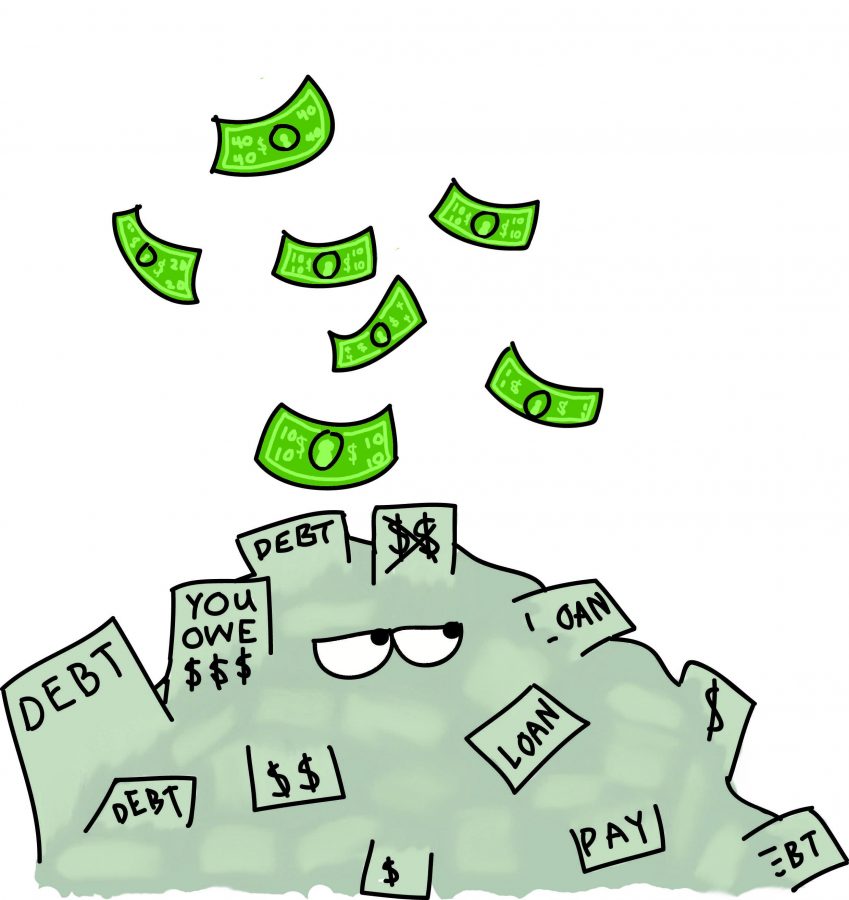One of the most pertinent issues discussed during the presidential election was the rising cost of education. Senator Bernie Sanders got the ball rolling when he announced his plans for government-funded free college. This proposal had former, current, and future college students shaking with excitement. The average student debt burden is $30,100, according to the Institute for College Access and Success, and can only be expected to increase with the rising cost of college.
While free universal post-secondary education sounds good in theory, it would actually tack on close to $62.6 billion annually to our already massive national debt, according to the Department of Education. So how do we make college more affordable without cutting federal spending in other essential areas?
One less discussed solution is grounded in the basic principle of supply and demand. Private and public universities alike can only charge a premium for their educations because of the guarantee of federal student loans. This means that the same product which allows an individual to attend an expensive university, federal loans, is also a key cost variable. As the government continues to grant loans to virtually anyone who asks for them, with nearly 94 percent of undergraduate students granted loans (according to the New York Times) institutions will always have students who can “afford” to pay the large sums for a diploma. Of the loans granted, 78 percent come from the federal government (according to collegeboard.com). Private lenders, especially for-profit organizations, are far less likely to distribute loans because of their tendency to assess risk (how likely they are to be paid back).
Now imagine a scenario in which the government decided to end their student loan program. Colleges would be forced to drop their prices to represent the actual market, or what the average family could afford to pay. Although there would be an intermediary period (say two to five years) in which many wouldn’t have access to a higher education due to the lack of loans in an unbalanced market, the long term benefits of a transition to the free market would outweigh the short term drawbacks. While subjecting students to an intermediary period seems cruel and inhumane, the current system has provided injustices to an underprivileged class year after year for the past century. A transition in which federal student loans were discontinued would create a system in which the cost of the college would be directly proportionate to the quality of education.
While some would question whether abolishing federal loans would leave the lower class vastly uneducated—as government assistance is need-based, skeptics should take note of the great amount of private grants and scholarship funds equipped to solve this issue. In 2007, over $2.9 billion were provided in private scholarship funding according to a finaid.org analysis. Certainly, the few whose accolades nor socioeconomic background could grant them college attendance would face the burden of private loans. Through a Google search, though, one can see interest rates on loans from private institutions could be established at around the current rate on federal loans (3.66 percent). This offers, what I believe, to be a more fair alternative to our current system, in which those who would traditionally enter the world with close to $30,000 in debt, would find an education that they could afford no matter their financial situation. Freeing the graduates of this horrible burden would allow for further innovation as greater numbers of students would feel free to pursue careers based on their passions, not future earnings.
As time has progressed, the value of a college degree has decreased, and even more surprising, 51 percent of college grads are in jobs that don’t require a degree, according to a study done by CareerBuilder. Although your return on investment for an education largely depends on your degree, this means that many people who come from a disadvantaged background are taking on an enormous debt burden without a logical reason to. The playing field is supposed to be level, and while government loans aim to provide that, they only work to perpetuate inequality.
As the United States enters the next chapter of our history, we face many issues. While a free market approach to student loans might not be the end-all be-all solution to the student debt crisis that many of us are looking for, it certainly offers a more egalitarian platform for preserving the American Dream.


